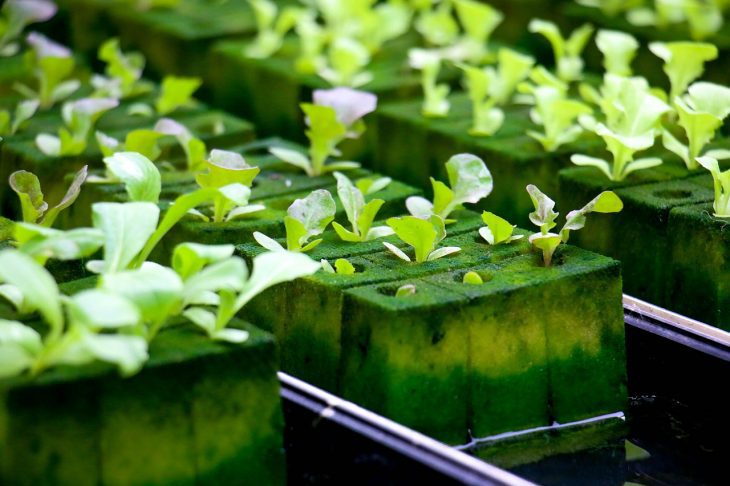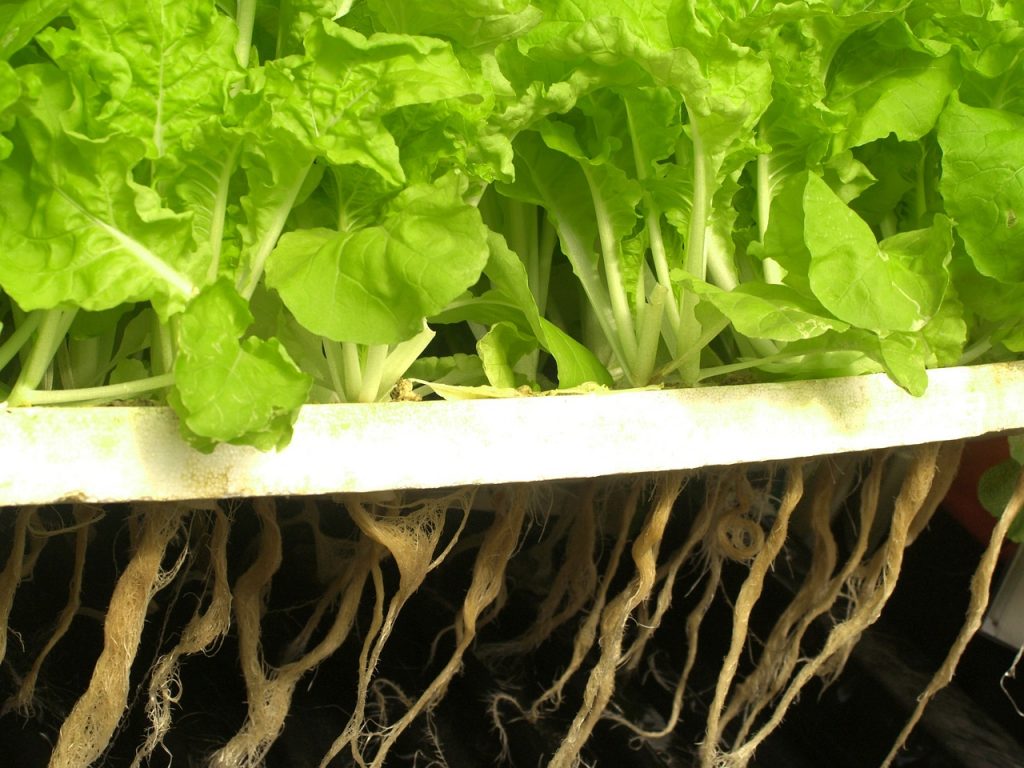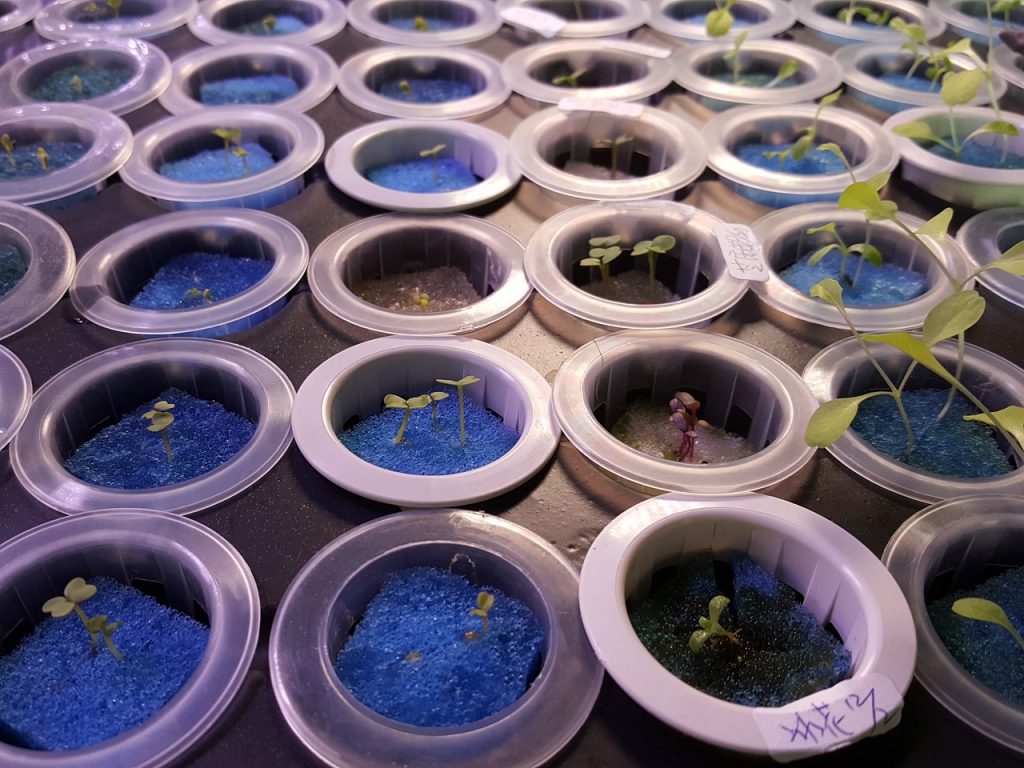What hydroponic substrate should you choose?

The hydroponic substrate is a support for plants growing hydroponically. Hydroponics is a technique of growing plants without soil. In traditional soil-based agriculture the soil serves as a substrate for plant roots to grow and it offers nutrients and water to the plant. In hydroponics, the substrate provides a physical structure for the plants to anchor themselves and support their growth, while nutrients and water are supplied separately through the hydroponic system.
There are many different types of materials that can be used as hydroponic substrates, but you can split them into 2 categories: professional growing media like rock wool,coconut Coir, perlite, vermiculite and cheap growing media like sand and gravel, wool and cotton, polystyrene, sponges and other similar materials.
Rock wool is the most widely used medium in hydroponics
Rockwool is made from melted rocks that are spun into fibers.

Rockwool growing medium has several advantages:
- Rockwool holds water well and therefore reduces the risk of plants getting dry and prevents nutrient deficiencies.
- Excellent aeration because it has a porous structure
- pH neutrality and sterility as it doesn’t affect the pH of the nutrient solution and it does not come with any harmful pathogens or pests
- Versatility: Rockwool can be used in various hydroponic systems: Kratky, drip systems, nutrient film technique (NFT) systems, and aeroponic systems
- Durability as it can be re-used and can be even cut in smaller pieces
Clay pellets substrate in hydroponics
Clay pellets are small, round balls made of clay that are used to support the plants in a hydroponic system.

There are several advantages to using clay pellets as a growing medium in hydroponics:
- Clay pellets are easy to handle; you can use less or more depending on the hydroponic plant
- Clay pellets retain moisture and provide a consistent source of nutrient solution for a long time because they have a porous structure
- Clay pellets have a neutral pH
- Clay pellets are inexpensive and can be sanitized and reused indefinitely
Coconut Coir hydroponic substrate
Coconut coir, also known as coco coir or coconut fiber, is a natural, renewable hydroponic growing medium that is made from the outer husk of coconuts.

Coco coir advantages in hydroponic substrates
- Coco coir retain moisture for a long time and provide a consistent source of nutrient solution to plants
- Coconut coir has a neutral pH, therefore it does not affect the nutrient solution PH.
- Being lightweight and porous it allows good air circulation around the roots
- It’s a renewable resource
- Coconut coir is easy to use: just soak it in water and then you can place it in a container or net cup in your hydroponic system
Perlite as a hydroponic growing media
Perlite is a type of volcanic glass that is formed when volcanic rock is heated to a high temperature and then rapidly cooled. The rapid cooling causes the rock to expand, creating small, lightweight balls of glass with a porous structure. Because its lightweight and porous it has a high water-holding capacity, which makes it a good hydroponic growing media.

Perlite hydroponic media advantages
- High water-holding capacity
- Neutral pH
- Lightweight and porous
- Environmentally friendly
- Can be mixed with other growing media, such as coconut coir or vermiculite, to create a well-draining and moisture-retaining growing mix.
- Cost-effective: Perlite is relatively inexpensive and can be used for multiple growing cycles
Vermiculite Hydroponic growing media
Vermiculite is a hydrous phyllosilicate mineral that expands and becomes porous when heated to a high temperature.

Vermiculite hydroponic media advantages are similar to perlite.
Sand and gravel as a hydroponic growing media
Sand and gravel can be used as a cheap hydroponic growing media, but they are not ideal for all types of hydroponic plants because they don’t hold water so well, they are heavy and may come with pests as slugs, snails, and insects or diseases.
Wool and cotton as a hydroponic growing media
Wool and cotton are not typically used as hydroponic growing media as they don’t offer a very good support to the plants. They can however be used to start seeds or for hydroponic herbs as a very cheap alternative.
Polystyrene as a hydroponic growing media

Polystyrene is used mostly in deep water culture hydroponic systems. Basically the polystyrene sheets are floating above the hydroponic solution and the plants are placed in small holes keeping them above the nutrient solution.
Sponges and other similar materials

Sponges can be used as a cheap hydroponic media because they are cheap and easy to cut to size. They can hold a good amount of nutrient solution, but in time can become a pest and disease hazard. Also, because sponges are made out of plastic, they can slower roots growth.
Leave a Reply